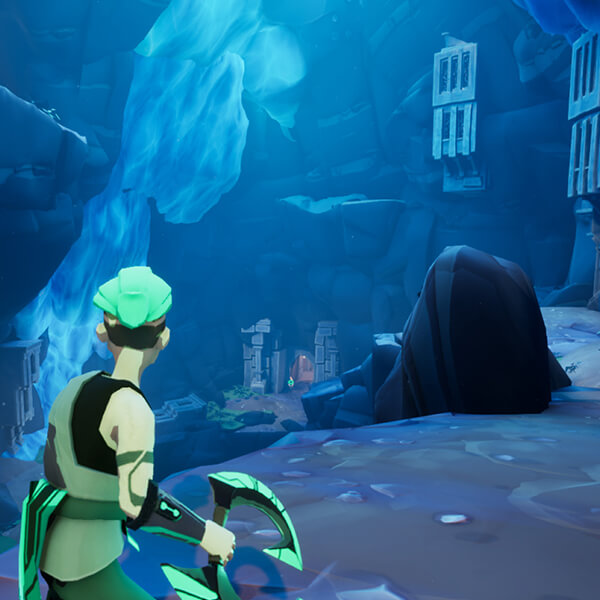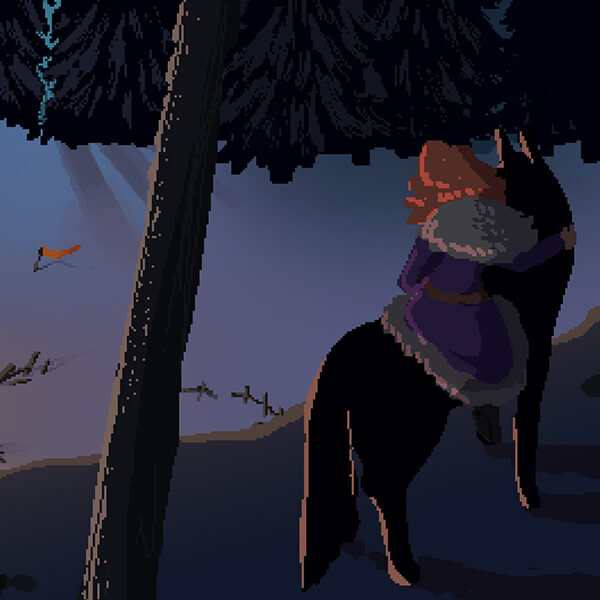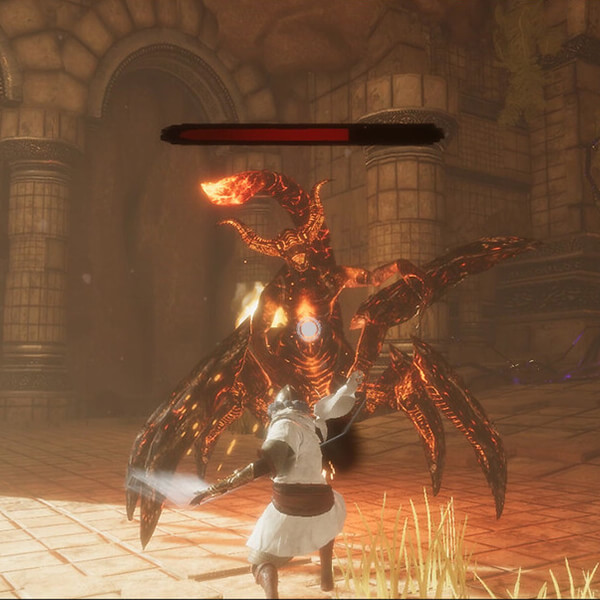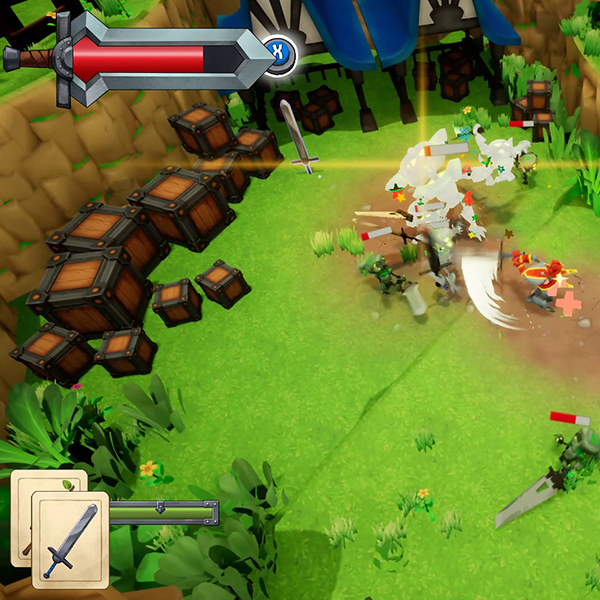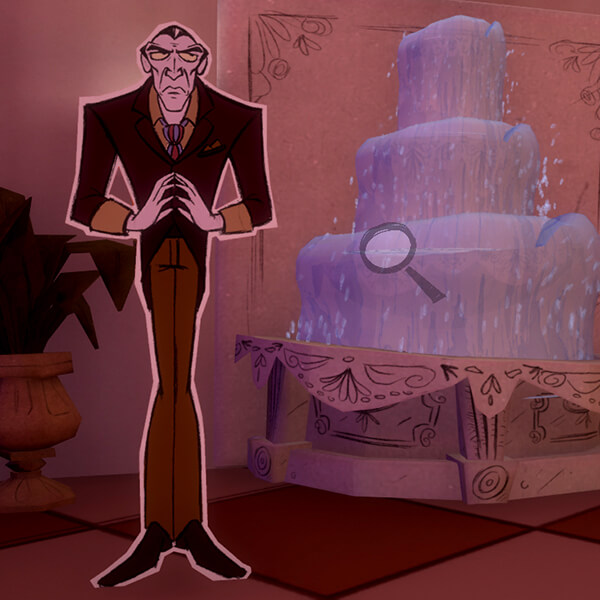DigiPen’s BA in Game Design program is built around six design concentrations — level design, narrative design, systems design, technical design, user experience design, and user research. Students spend their first two years learning about each design discipline, then choose two they would like to specialize in at the end of their sophomore year. While all six disciplines overlap and interact with one another, this series takes a closer look at each individual concentration.
As DigiPen instructor Jo Cronk puts it, if you ask someone in the game industry what a technical designer does, you’ll get lots of different answers. “The job description can completely vary studio by studio. There’s a slide I use in class that says ‘What is technical design?’ with a picture of a person wearing 50 different hats,” Cronk laughs.
That’s because technical designers are something like the Swiss army knives of game development teams — a cross-disciplinary hybrid between a designer and a programmer whose main job is to make everyone’s lives easier, depending on what they need. Oftentimes, a large part of a technical designer’s job is simply figuring out what everyone needs. “You have to have a really varied skill set,” Cronk says. Although technical designers cast a wide net in their work, there are a few common threads that define the role. “Technical designers tend to be divided into two main camps: gameplay or tools,” Cronk says. “On either side, a technical designer’s goal is to optimize processes and reduce cognitive load for your teammates.”
In the gameplay camp, technical designers use their programming knowledge to create playable prototypes that others on the design team — who may not have much programming knowledge — can playtest with. “You’re taking the intangible ideas of other designers on the team, things like systems and mechanics, and implementing them quickly within the game engine,” Cronk says. Because technical designers are still designers at heart, they also play a key role in helping refine the subtler aspects of game feel. “Any time you’re dealing with rate of fire, movement speed, variables like that, you can expose them in the game editor so designers can tweak them. That means designers can be more autonomous without always having to talk to a programmer.” A technical designer’s prototypes might not use the most efficient code — a task that belongs to an actual engine programmer — but that’s not the point. “There is no sense in spending a bunch of time writing perfect code for anything that’s just going to get tossed out,” Cronk says. “You want to be able to prototype quickly, iterate, and see how things work.”
On the tools end, technical designers support their teammates by pinpointing their specific needs and creating custom tools to make their jobs easier. Those tools can save people countless hours of work, as Cronk discovered early in their technical design career working on Tomb Raider: Legend. “I asked our artists if there was anything they did all the time, by hand, that took multiple steps,” Cronk says. “One of them was the way they had to rig and animate human skeletal meshes.” After learning some MaxScript, Cronk extended the artists’ 3D Studio Max toolbars so they could complete the entire process with a single button press. “I remember the artists all going, ‘Wait a minute, you did what!?’” Creating good tools can also simply mean changing a user interface (UI) to make it more legible for your teammates. “Sometimes creative team members will get tools with UI that’s been designed by programmers, for programmers,” Cronk says. “You really need to understand what your teammate is trying to do, how they’re used to doing those things, and what their own mental models are in order to create user-friendly UIs for them.”
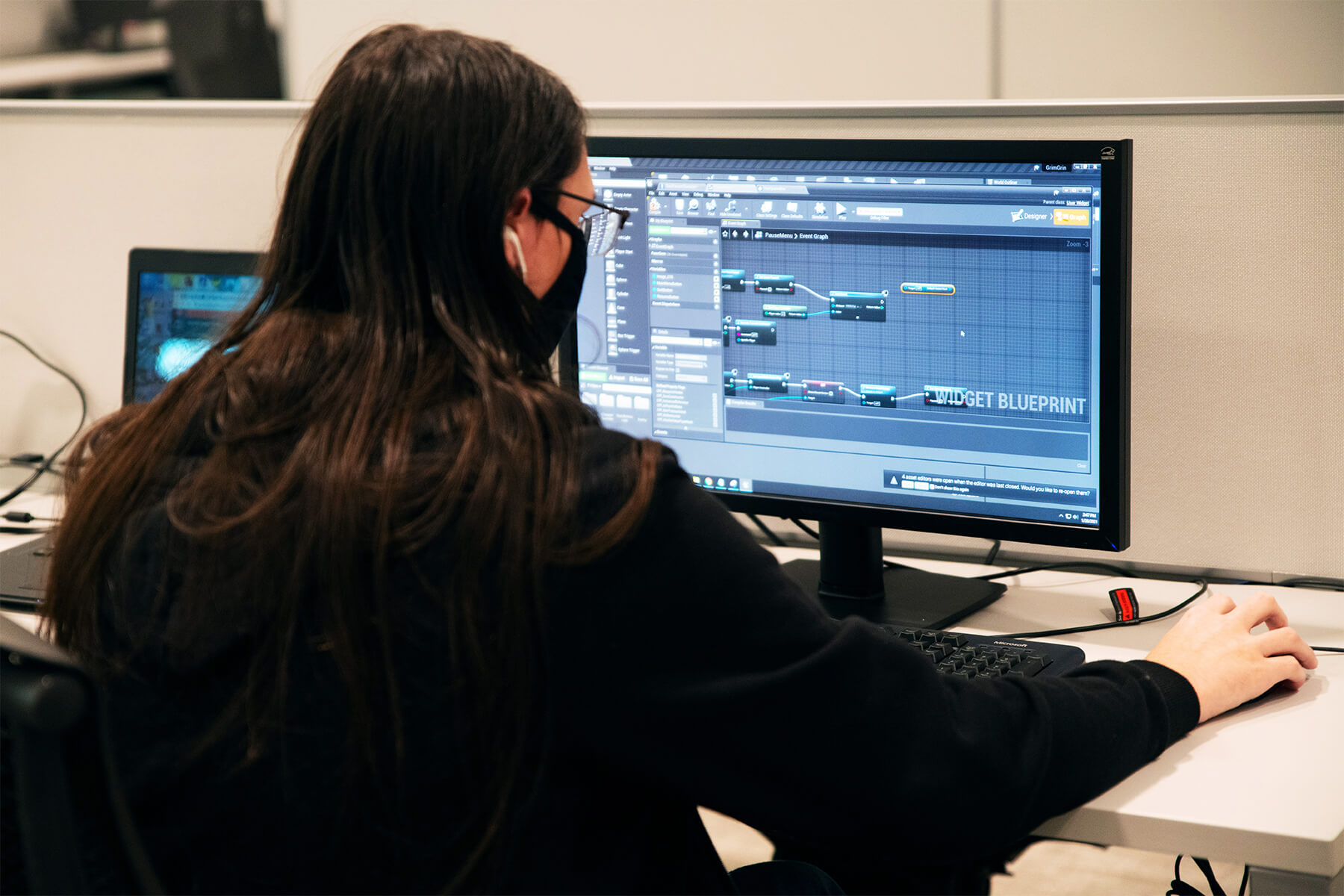
Sitting on the edge of a creative discipline like design and a technical discipline like programming, technical designers often become mediators and translators between the two. “Programming and design are obviously hugely important in this role, but ‘soft’ skills like written and verbal communication are just as important,” Cronk says. Misunderstandings on development teams between designers and programmers — who don’t always speak the same language — can lead to serious production jams. “You’ll hear that the programmers denied the design team’s feature request because the engine won’t support it,” Cronk says. “So you ask the designers what they requested, and you realize they meant something completely different that actually is feasible in the engine. But they just didn’t know what to ask for.” By running interference between departments and acting as a missing link on development teams, technical designers unblock everyone’s work and keep things moving.
At DigiPen, Technical Design I is one of the very first classes BA in Game Design students take. “We want to give students early hands-on experience with prototyping a variety of things so they can be productive, functional members of their game teams,” Cronk says. Using Unity and visual scripting tools, students create several interactive applications and practice different development techniques each week. “We focus on creating 2D character controllers and camera systems, implementing gameplay systems, and thinking about game feel,” Cronk says. “We also spend time discussing different games that the students have played, trying to analyze what it is about controls or cameras that people have liked or disliked, and why.” At the end of the semester, students put together all the skills they’ve learned to design and implement a small solo 2D game. In more advanced technical design courses, students learn about prototyping in Unreal Engine 4, ways to quickly adapt to custom engines they might encounter at established game studios, and get the opportunity to explore special interest topics like dynamic camera systems, tools development, and more.
DigiPen BA in Game Design student Kevin Jacobson on diving into technical design:
“Technical design combines my passion for game design with my passion for programming. It’s my responsibility to understand both the game being developed and the engine being used to develop it. A key part of that is facilitating communication between departments, so the designers understand what’s possible in the engine, and the programmers understand what the designers want from the game. I also enjoy being more hands-on, directly implementing gameplay features myself instead of passing them on.
“Tools programming is also a passion of mine. I don’t just like to make things work — I like to make them work well. That can mean adding new functionalities, improving the user interface, or even completely refactoring a toolset. An experienced technical designer can look at a team’s workflow, find the bottlenecks, and design a tool to improve them, making everybody’s life a bit easier. I enjoy helping people, so this feels right at home.
“As a freshman, I used my C# experience to create a physics-based ‘drift’ controller in Unity for our game project, complete with a ‘tractor beam’ grappling hook. On my sophomore game, I wrote some of the early gameplay mechanics — a moving platform and a rotating laser — in C++, and I frequently helped the programmers debug issues within our custom engine. This year as a junior, I’m working more closely with the rest of my team as we get started with Unreal, helping troubleshoot tools issues and translating concepts between design, art, audio, and tech.”
Related Articles in this Series
